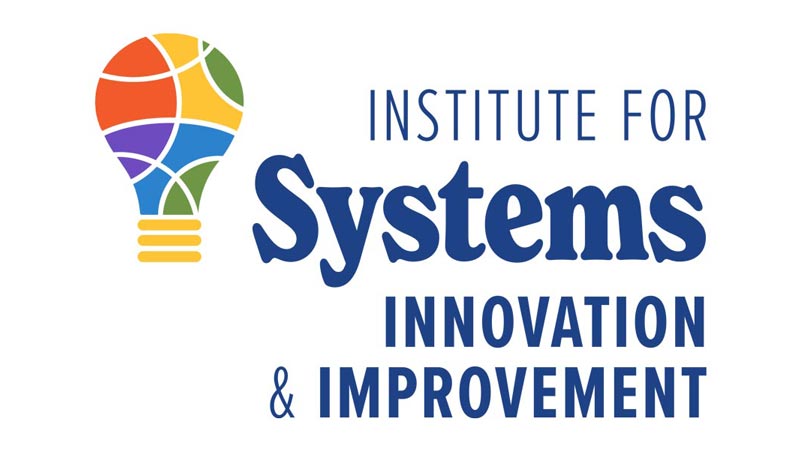Institute for Systems Innovation & Improvement

The Institute for Systems Innovation and Improvement was created to achieve progress within the five imperatives from the Power of Systems. A core strategy of the Institute involves adapting the improvement science utilized by the Carnegie Foundation and the Institute for Healthcare Improvement to networks of postsecondary systems and applying these methodologies to specific problems of practice.
As explained below, we organize this work within NASH Improvement Communities’ (NICs):
NICs Explained
Have you ever wondered why something in higher education couldn’t just work… better?
NASH has adapted the improvement science methodologies successfully utilized in sectors such as health care and software development to public higher education systems. The vehicle for this work is our NASH Improvement Communities (NICs).
NICs are Grassroots at Scale
By leveraging improvement science, NICs test interventions that address challenges in higher education.
They provide a grassroots – rather than top-down – approach to developing and testing measurable change. The hallmark of the NIC model is that NASH facilitates its member systems and their campuses so that the people doing the work are the ones engaged in creating, testing, and implementing change.
These positive results can in turn create customizable, turn-key solutions that NASH helps to scale within and across systems around the country.


NICs are Process-Driven
NASH provides coordination, project support, professional development, and knowledge management for NICs. The participating systems provide leadership and coordination to their campus teams, which include leaders at the system level and individuals directly involved in addressing the identified problem at the campus.
For example, a Transfer NIC team might include representatives from the admissions, advising, registrar, faculty, and other campus departments who work closely with students.
These teams devise “tests of change” to redesign campus systems and processes for students along three phases.
Phase 1: Assessment & Preparation
(8 weeks) – System personnel gather data, study the problem, and engage in disciplined inquiry to best understand the issue. System teams analyze the information and attend virtual workshops on improvement science before a face-to-face NASH convening.
Phase 2: Workshops & Action Cycles
(12 months) – Systems identify an aim statement with measurable goals, explore root causes of the problem, prioritize approaches, identify problem areas, and then create plans to conduct rapid tests of change of possible solutions to achieve the aim. Based on the results, system teams decide to adopt, adapt, or abandon a change idea for the next Action Cycle.
Phase 3: Analysis, Reflection, and Dissemination
(4 weeks) – Systems analyze their findings to see if the tests of change work and are worthy for scaling.
NICs are Changing the Game
NICs represent a fundamentally different approach to change in higher education with the following characteristics:
Speed
Teams operate in 45-day "Action Cycles," each team testing three change ideas per Action Cycle. Data is collected to determine the effectiveness of these ideas. At the end of each cycle, teams share results and decide which ideas are worth iterating or discarding for new ones. Initially, these rapid tests are done on relatively small numbers of students, which allows for swift progress and minimizes the risk in case the test does not produce improvement.


Culture
NICs foster organizational trust and embrace the notion of failure as a learning opportunity. The initial small-scale tests of change lower the stakes and encourage quick learning. Ideas are only scaled up after enough evidence is collected to show that the intervention can work at scale across different environments or, as we like to say, “fail before scale.”
Networked Learning
Knowledge generated within participating systems can be shared and applied to other campuses and systems. Rigorously tested ideas result in a "change package" that can be scaled across the nation’s 65 public higher education systems and to other higher education institutions.


Structure
NICs reverse the traditional top-down model of education reform. They empower those closest to the problem to design and test solutions. Tested and researched ideas are then scaled up for broader implementation.
NICs are Working
To date, with the support of philanthropic partners, NASH has launched NICs on transfer, curricular flexibility (course sharing), and closing equity gaps in degree completion. Results from NICs are promising, generating positive outcomes and several early success stories.
From Small Test of Change to System Practice
One team at a four-year campus collaborated with their colleagues at a community college. During the first step of the process, they scoped a small test of change to help 11 summer-to-fall transfer students register successfully for the fall semester. The team found that students were falling through the cracks because they were assigned to faculty advisers with limited availability during the summer. They decided to test whether assigning students to non-faculty advising staff would improve the student experience and increase registrations. Within 24 hours, the staff reported that the students reached were elated to be supported in their transition, and the staff asked if they could reach out to more students. Since then, this test has been replicated and expanded to additional campuses in the system and has now become the institutional practice for the system.
Redesigning Flawed Administrative Processes
A second team documented the current administrative process for transfer students and uncover inefficiencies in the admissions and advising processes. The team discovered one driver of this was the communication between the admissions department and the relevant program department. Starting with one campus, the team redesigned the alert system to produce weekly reports/alerts to the program regarding newly admitted/committed students into their program, allowing the program staff/faculty to reach out to students in a timely manner proactively. The new system, coupled with proactive outreach from advisors, led to a 30% increase in the number of new transfer students registered for the spring semester.
Understanding Variation Between System Policy and Campus Reality
A third team decided to test whether their internal systems were consistent with system-wide transfer-friendly policies. By conducting an audit on all recently matriculated transfer student to determine how the transfer credit pathways were working, the team found a gap between how incoming credits should have been awarded and what the current process was awarding. The initial audit revealed that 456 students were due additional transfer credits. In total, 2,414 credits were able to be awarded to these transfer students, representing an average of 5.3 credits per student. This finding allowed the campus to award these credits immediately, and shortened time to degree for current students. Going forward, this discovery has led to closer examination around what processes the campus needs to change in order to award the appropriate transfer credits for each incoming transfer student with reliability.
Want to learn more or participate in a NIC?
